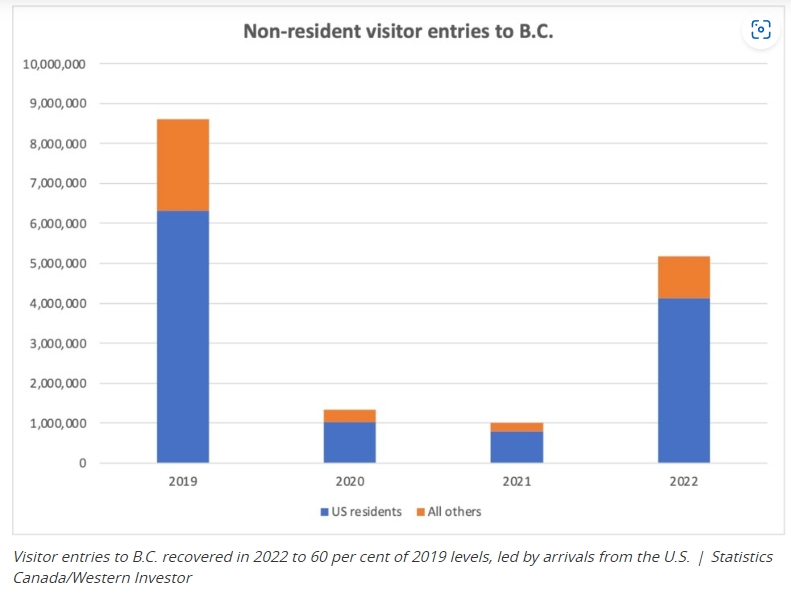Truck traffic lags 2019 levels at many ports of entry across Western Canada.

British Columbia international visitor entries in 2022 compared favourably to 2019, data Statistics Canada released Feb. 22 showed.
A recap of entries from all countries, including the U.S., showed entries at 60 per cent of 2019, the year before COVID-19 triggered restrictions on international travel and the hotel industry was effectively shut down.
This was second only to Alberta, where visitor entries of all types were down 39 per cent. A rebound in truck traffic contributed to the resurgence, with truck entries back to 80 per cent of 2019 levels last year.
Saskatchewan and Manitoba entries were down 56 per cent and 50 per cent, respectively, as both tourist and truck traffic continued to lag pre-pandemic levels.
The resurgence in B.C. is good news for hoteliers, which ended 2022 on a strong note. The province recorded high occupancies and strong growth in average daily rate, which in turn supported room revenues that ranked among the highest in the country.
Statistics Canada numbers point to entries from the U.S. rebounding more strongly than international arrivals. U.S. entries were down 35 per cent versus 2019 whereas international entries were down 54 per cent for the year.
However, the lifting of travel restrictions and testing requirements last year resulted in foreign visitor entries of all kinds increasing five-fold versus 2021.
The resurgence was driven by air traffic; vehicle arrivals remained down 48 per cent overall. The key tourist crossing of Pacific Crossing and Peace Arch in Surrey as well as the crossing to Point Roberts recovered in line with or better than the province overall.
Pacific Crossing in Surrey, favoured by truckers, recovered most, with traffic 58 per cent of 2019 levels. Notably, the importance of commercial traffic here meant that entries were double rather than quadruple 2021 levels.
The resurgence of traffic is a positive indicator for 2023. Despite economic uncertainties, travel patterns are returning to pre-pandemic levels even though a full recovery is not expected until 2024.
The resilience of truck traffic on routes to and from the key industrial areas of the Lower Mainland also points to the importance of open borders to the Metro Vancouver economy.
Source/Western Investor




